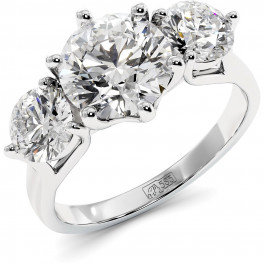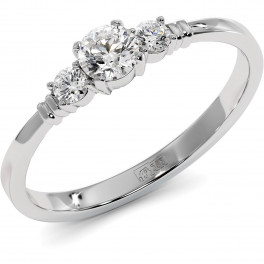In recent years, the jewelry industry has become more and more interested in the unusual gemstone known as moissanite. While many people might believe moissanite is a recent discovery, it has space-related origins.
At a meteorite crater in Arizona, French chemist Henri Moissan discovered a brand-new mineral in 1893. The silicon carbide-containing mineral, which was eventually given the name moissanite in recognition of its discoverer, was distinct from all other minerals at the time due to its special qualities. It was one of the hardest substances on earth, with a Mohs hardness rating of 9.25, which was extraordinarily high. It was also incredibly uncommon; only a few tiny crystals were discovered in the crater.
Moissanite was a scientific curiosity that was studied for a long time but was rarely put to use in daily life. Moissanite wasn't created in a laboratory for the first time until the 1980s. Researchers found that they could create silicon carbide crystals that were virtually equivalent to natural moissanite by simulating the high-pressure, high-temperature conditions present in the earth's mantle.
The hardness and brilliance of these laboratory-grown moissanite crystals were as exceptional as those of natural moissanite, but they were also far larger and more widely accessible. This makes them a desirable substitute for diamonds, which are significantly more expensive and less common.
Throughout the 1990s, the popularity of moissanite as a diamond substitute quickly increased, and by the beginning of the 2000s, it was a common option for moissanite wedding rings and other jewelry. Currently, moissanite is regarded as a premium gemstone with numerous advantages over diamonds.
The low cost of moissanite is one of its main advantages. Moissanite is significantly less expensive than diamonds, which can cost hundreds of dollars per carat. This makes it the perfect option for couples looking for a gorgeous, high-quality moissanite wedding rings without going over budget.
The environmental friendliness of moissanite is another advantage. Unlike diamonds, which are frequently mined in harmful ways for the environment, moissanite is a lab-grown gem. For customers who care about the environment, this makes it a more environmentally responsible option.
Moissanite is renowned for its extraordinary brilliance and fire in addition to its advantages for the environment. Moissanite can scatter light in a way that seems like a rainbow because it is so rough and reflective. Because of this, moissanite is a preferred material for jewelry designers who wish to produce striking designs.
Although moissanite has only recently gained popularity in the jewelry market due to its distinctive qualities and rich past, it is a fascinating gemstone with a promising future. The availability and affordability of moissanite are anticipated to increase as technology advances, making it an even more alluring substitute for diamonds.
In conclusion, moissanite is a gemstone with a colorful past and a special combination of qualities that make it stand out from all other gems found in nature. Moissanite was first created in a laboratory in the 1980s, even though it had been found in a meteorite crater more than a century earlier. Since then, it has grown in popularity as a gemstone for engagement rings and other jewelry.

 English
English Русский
Русский

